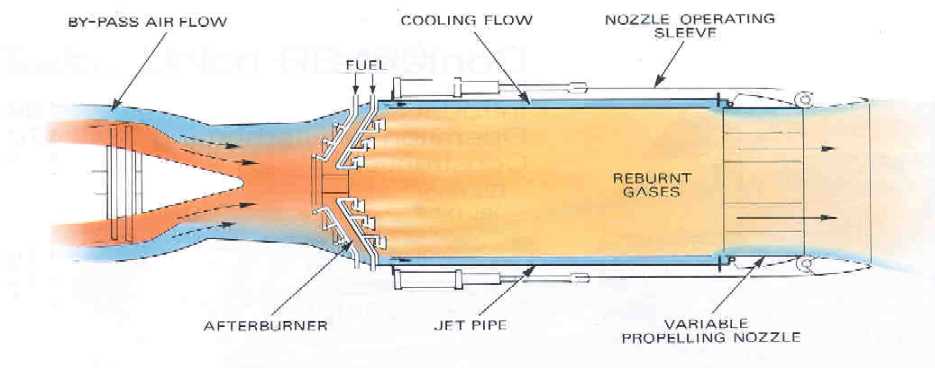How Jet Engines Work
The Machines That Drive The Most Powerful Human Creations.
Fighter Jets are some of the fastest machines ever made by humans. The fastest jet, the Lockheed SR-71 Blackbird, reaches speeds of Mach 3, or 2,200 miles per hour. That’s three times the speed of sound. How do these pieces of metal that weigh several thousand pounds move so fast? It’s because they are driven by some of the most powerful machines ever made by humans; jet engines.

A jet engine is split into three distinct sections.
The Cool Section:
- The intake fan, which sucks in cool, outside air into the engine. The air either goes through a bypass duct or through the compressors which both feed air into the engine. The air traveling through the bypass duct helps to cool the engine.
- The compressors make the air taken in from the outside fan more combustible by compressing the air. By spinning a series of specially shaped blades, the blades are split into two stages. the LPC (low pressure compressors) and HPC (high pressure compressors)
The Combustion Chamber:
- The diffuser. When the air is coming into the compressors, it’s moving very fast. This is good for compression, but terrible for ignition. Imagine that the ignition is a candle, and that the compressors are a high powered fan, the air would just blow the candle out. That’s why there is a diffuser, which takes the high pressure, fast moving air, and converts it to slow moving, high pressure air which is much better for combustion
- The combustion chamber takes the high pressure, combustible air from the compressors, mixes fuel into it, and burns it. This results in an enormous amount of energy being released, and the combustion chamber can become almost 3,000 degrees Fahrenheit.
The Hot Section:
- This section consists of the turbines, which capture the energy when the fuel is burned to turn the compressors. Like how a windmill captures the wind to turn a motor, the turbines are separated into a low pressure component and a high pressure component as well, which are connected to the compressors with geared shafts.
Some jet engines have an afterburner, which makes them even faster. The after burner is basically explained by its name. It’s fuel that is burned after the turbines in a separate chamber.

Planes that have afterburners also have variable exhaust nozzles. VENs’ adjust the diameter of the exhaust pipe, so that the jet will always have an optimal flow of the exhaust gases.
Using this system of thrust, jets can travel faster than the speed of sound. Human ingenuity is amazing, and has propelled us to astounding heights. It’s exciting to see how fast and far we will be able to go in the next hundred years.
RELATED STORIES
https://calaero.edu/how-do-jet-engines-work/
TAKE ACTION















